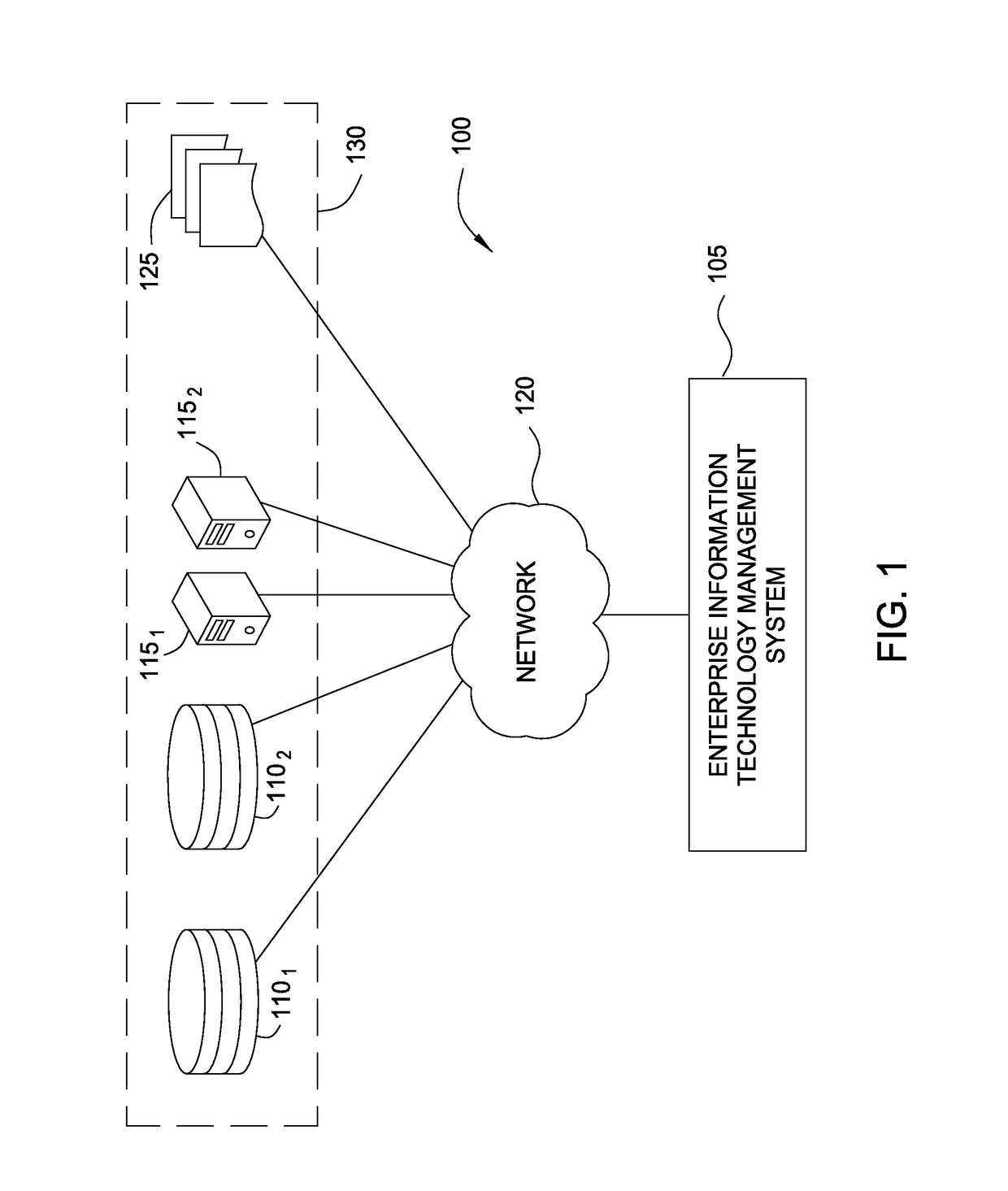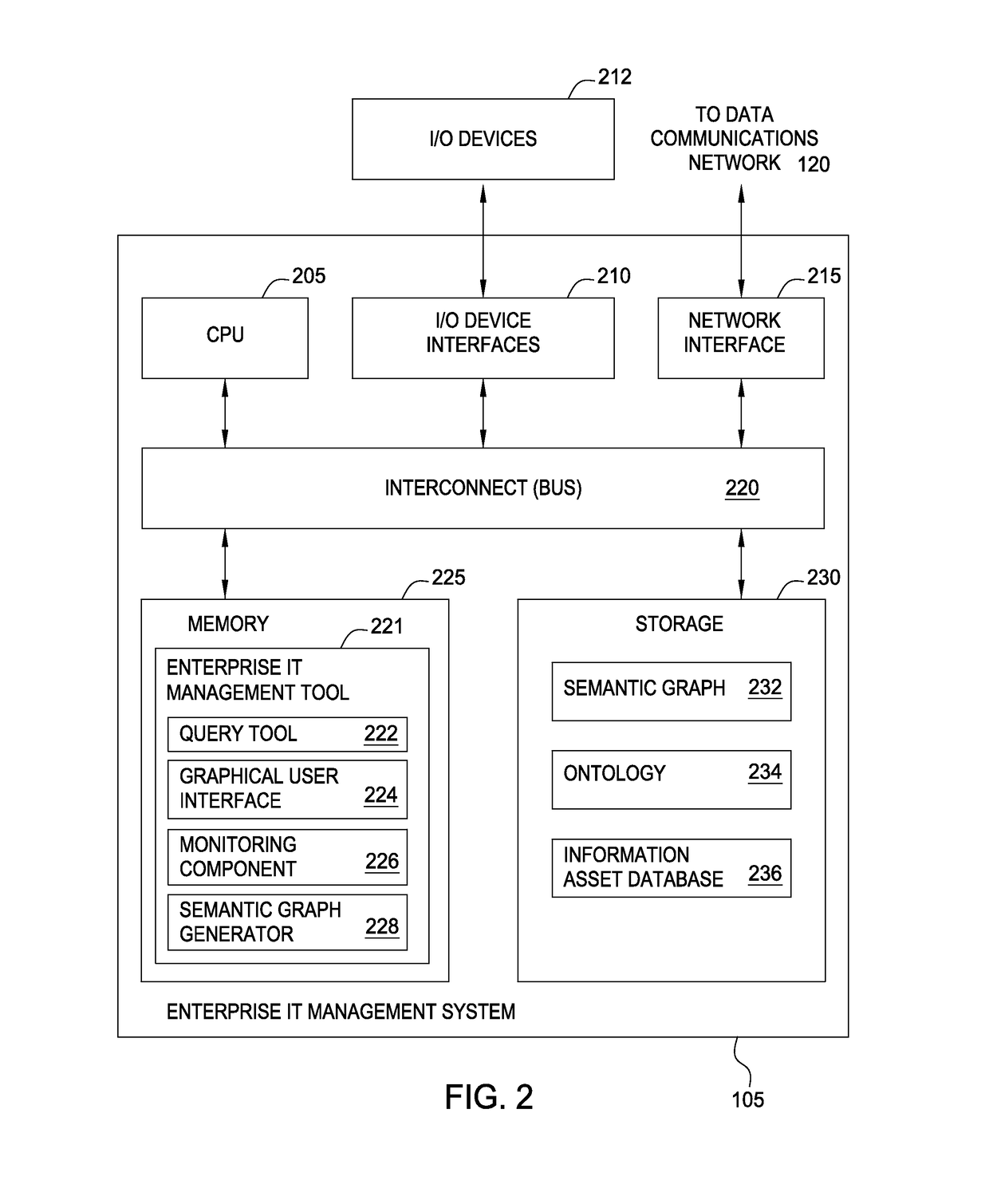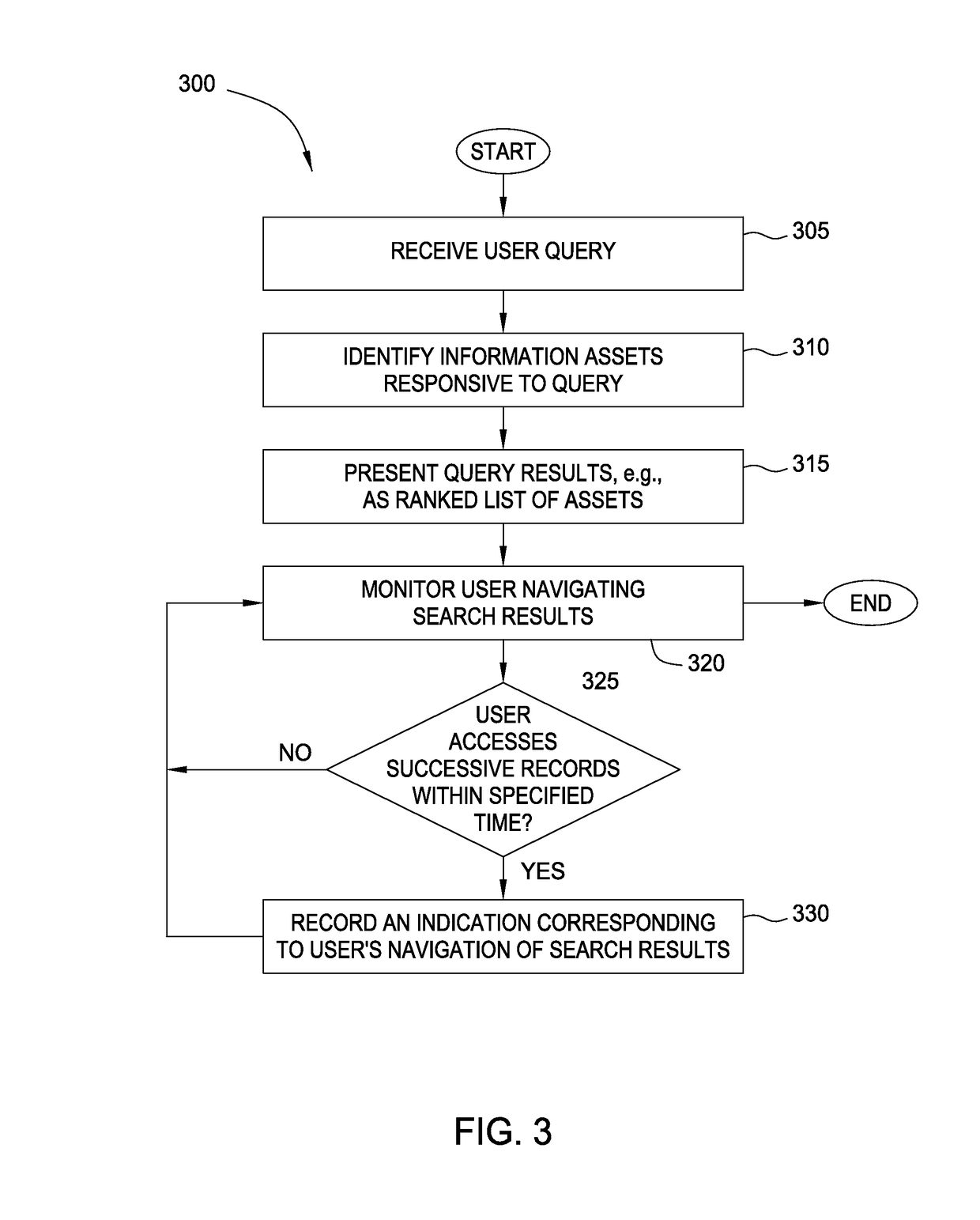Identifying information assets within an enterprise using a semantic graph created using feedback re-enforced search and navigation
a technology of information assets and semantic graphs, applied in the field of management of information assets, can solve the problem that systems are often outnumbered by unmanaged systems
- Summary
- Abstract
- Description
- Claims
- Application Information
AI Technical Summary
Benefits of technology
Problems solved by technology
Method used
Image
Examples
Embodiment Construction
[0016]Some enterprise-level information management systems provide a search interface which allow users to access information asset descriptions, data models, and / or other similar objects residing in a database or (or stored as metadata). Often however, the results presented using such tools result in significant ambiguity and confusion for the user, particularly for large result-sets. For example, a query result which includes a large count of returned assets can require many pages to be displayed. Further, such results may be interrelated in a variety of interesting ways not accounted for in the result set. As a result, end-users who are unaware as to how the information assets are organized can get lost in a large number of results and are forced to simply jump from one page to the other, hoping to find to the particular related assets they need. Further, when a user accesses one element of a search result, the interface does not provide any visibility to additional related asset...
PUM
 Login to View More
Login to View More Abstract
Description
Claims
Application Information
 Login to View More
Login to View More - R&D
- Intellectual Property
- Life Sciences
- Materials
- Tech Scout
- Unparalleled Data Quality
- Higher Quality Content
- 60% Fewer Hallucinations
Browse by: Latest US Patents, China's latest patents, Technical Efficacy Thesaurus, Application Domain, Technology Topic, Popular Technical Reports.
© 2025 PatSnap. All rights reserved.Legal|Privacy policy|Modern Slavery Act Transparency Statement|Sitemap|About US| Contact US: help@patsnap.com



